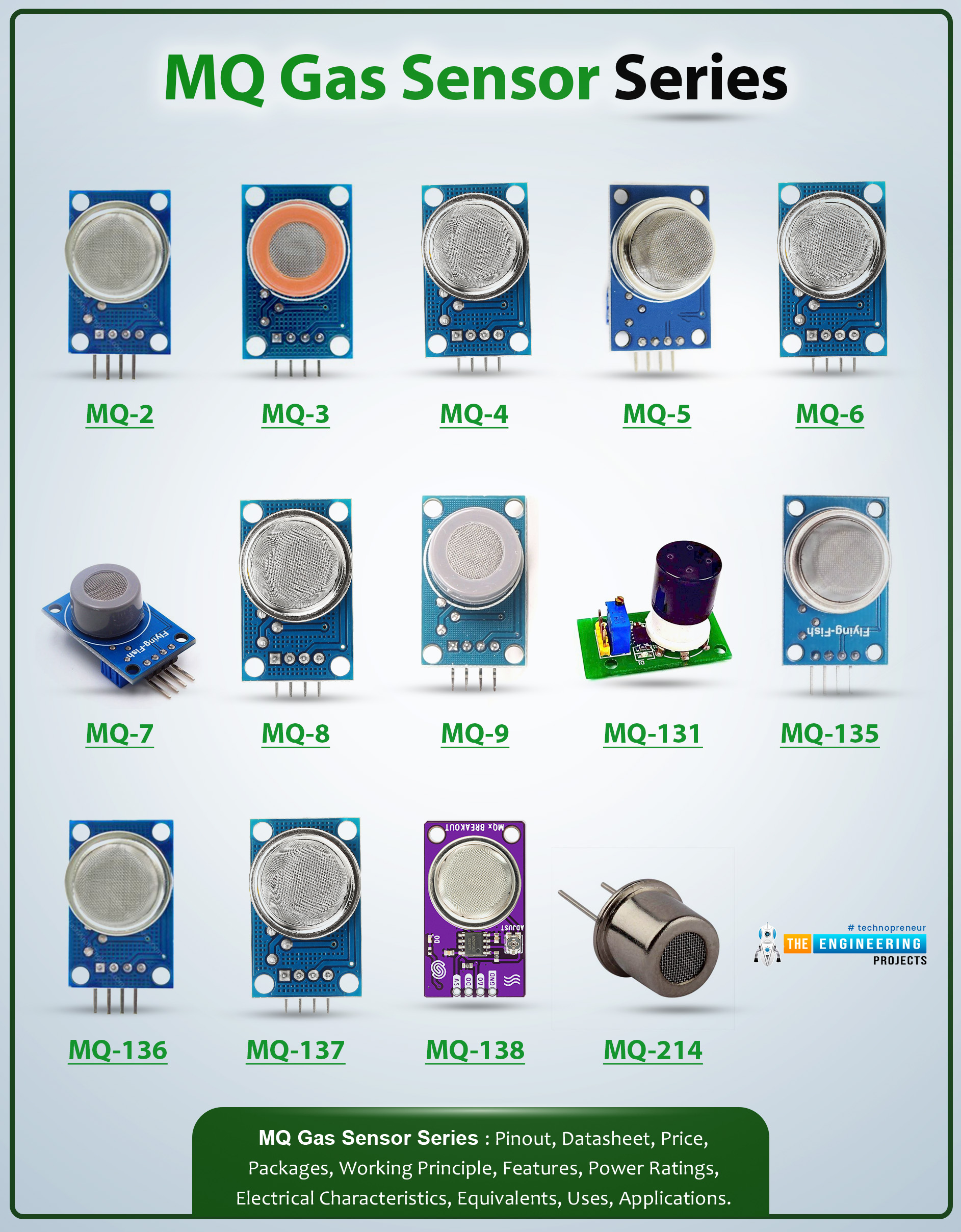
Hi readers! Welcome to a detailed exploration of the MQ gas sensor series where we are discussing the basic details of its members. This series was engineered using revolutionary technology to detect combustible and toxic gases with great efficiency. It uses the chemiresistor sensing element to detect the target gas and has a quick response time that makes it a reliable choice. These are used in multiple industries, domestic areas, offices, and other places where a chance of leakage of combustible gas occurs. This series might not be fancy, but it is designed for a long life and ensures minimal false detection for reliable output.
We are going to start the discussion with a basic introduction to this series, and then we’ll try to clear up some basic concepts in order to have the best understanding. The main target of this article is to discuss the gas sensors individually and highlight their distinctive features. You will see each MQ sensor in it, and in the end, we will discuss its working principle and conclude each point. Here is today’s first topic:
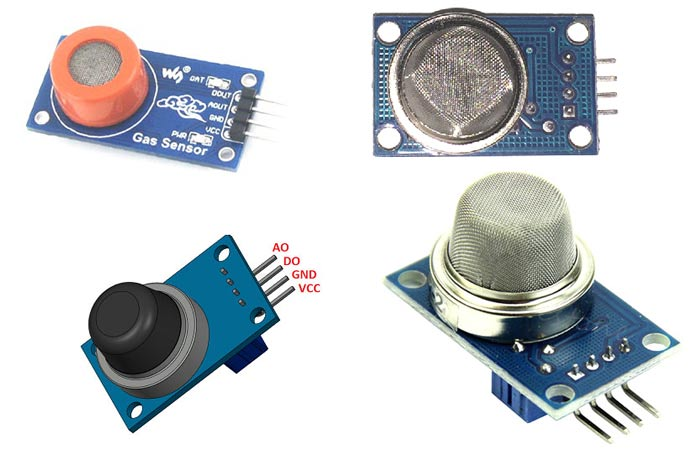
What is a Gas Sensor?
A gas sensor is an electronic device that is used for the detection of a particular gas in the surrounding air. In some cases, it also measures the concentration of the target gas. Mostly, these sensors work on the basic chemical reaction of the gas molecules with the internal components. These are some of the most basic elements of the safety system in different industries and systems and are life-saving in different cases.
Gas sensors come in different sizes and shapes, and usually, these are the parts of a circuit that may include the microcontroller boards. These boards take the information from the gas sensor and control the other members of the circuit. There are multiple series of gas sensors that play crucial roles in different domains, and some important names are highlighted here:
- MQ Gas Sensor Series
- Figaro TGS Gas Sensor Series
- Alphasense B4 Series
- SGX Sensortech MiCS Series
- Winsen Gas Sensor Series
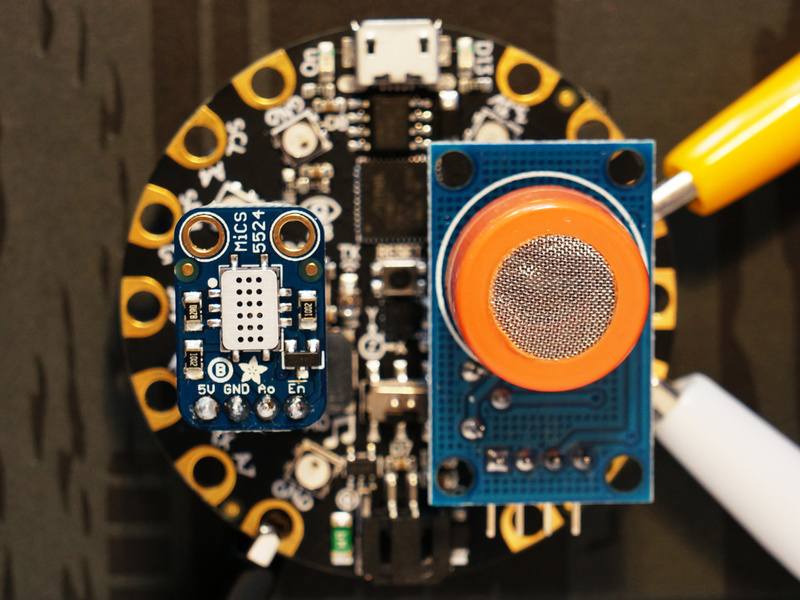
MQ Gas Sensor Series Introduction
The MQ gas sensor series is a popular series that is designed mainly for combustible gases like methane, carbon monoxide, liquefied petroleum gas, alcohol, hydrogen, propane, butane, smoke, natural gas, carbon dioxide, and many others. Each member of this series is designed to detect a particular set of gases. This series is compatible with Arduino and arduino related boards (such as the ESP32) and incorporates different circuits.
The features of this sensor make it one of the most suitable options for all types of users, whether they are students, professionals, or hobbyists, and they can utilize it for different projects. The good thing is, that each sensor is pretty straightforward to install, has a simple structure, works on low power, and is a cost-effective solution to the gas leakage problem.
MQ Gas Sensor Series Basic Concepts
Prior to exploring the different types, it's essential to establish some fundamental points regarding gas sensors. The detection of the presence of gas is not enough, but gas concentration (quantity of the gas) is a crucial point when measuring gases like carbon dioxide, oxygen, ozone, or methane. Generally, two units are used to measure the gas concentration, the basic introduction of which is given here:
What is the ppm?
The parts per million (abbreviated as ppm) is the ratio of one gas with respect to the other. In simple words, if we are dealing with the concentration of oxygen in the air, then 1000 ppm of O2 in the air means that if we have a million gas molecules, then 1000 out of these are oxygen and the other 999,000 are air. The same concept is applied to different units other than millions, such as:
- Micrograms per cubic meter (µg/m³)
- Milligrams per cubic meter (mg/m³)
- Parts per billion (ppb)
- Milliliters per liter (ml/L)
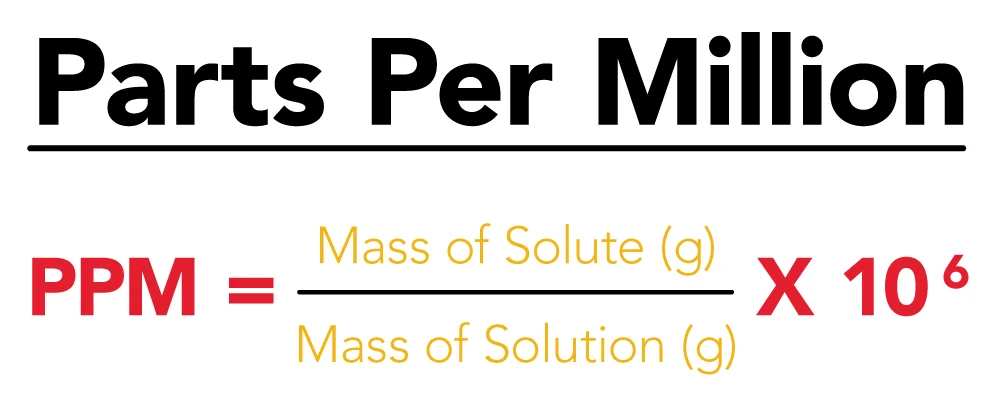
What is the Percentage Concentration?
Another unit to measure the concentration of gas is the percentage concentration. It refers to the percentage of a particular gas in a mixture of different gases. In simple words, it is the total percentage of 100 in the mixture. For instance, the 20% percentage concentration of carbon mono oxide (CO) in the air means, 20% CO is present in the air and 80% are other gases in a particular area.
In the MQ gas sensor series, usually, the ppm is used to describe the performance of the sensor with respect to the concentration. The relationship between these two units is shown as:
1 ppm= 1/10,00,000=0.0001%
MQ Gas Sensor Series Types
As mentioned before, the MQ gas sensor series offers multiple sensors that are associated with a particular group of gases. Here is a list of all the members present in the MQ sensor family:
Sensor Model |
Target Gases |
MQ-2 |
Methane, Butane, LPG, and smoke |
MQ-3 |
Alcohol, Ethanol, and Smoke |
MQ-4 |
Methane, CNG |
MQ-5 |
Natural gas, LPG |
MQ-6 |
LPG, Butane gas |
MQ-7 |
Carbon monoxide gas |
MQ-8 |
Hydrogen gas |
MQ-9 |
Carbon monoxide, and flammable gases |
MQ-131 |
Ozone |
MQ-135 |
Carbon monoxide, Benzene, Ammonia, Alcohol, and smoke |
MQ-136 |
Hydrogen Sulfide |
MQ-137 |
Ammonia |
MQ-138 |
Benzene, Toluene, Alcohol, Acetone, Propane, Formaldehyde, and Hydrogen |
MQ-214 |
Methane, Natural gas |
MQ Gas Sensor Series Detail
Until now, we’ve seen the name and related gas, but each of them has some specific features, so let’s highlight some important points about each of the MQ gas sensor series:
MQ2 Gas Sensor
The MQ2 gas sensor is an electronic device that is used to detect various flammable gases such as methane (CH4), butane (C4H10), liquefied petroleum gas (LPG), and smoke. Because of its wide number of detectable gases, it is equally useful in industries as well as in domestic areas where these combustible gases are widely used for cooking, fuel, or other purposes.
This sensor has a quick response time and a high sensitivity, which make it a good and reliable choice for detecting flammable gases that can pose a serious threat to health and safety. It is a versatile gas sensor and, therefore, is one of the most commonly used sensors in the MQ sensor series.
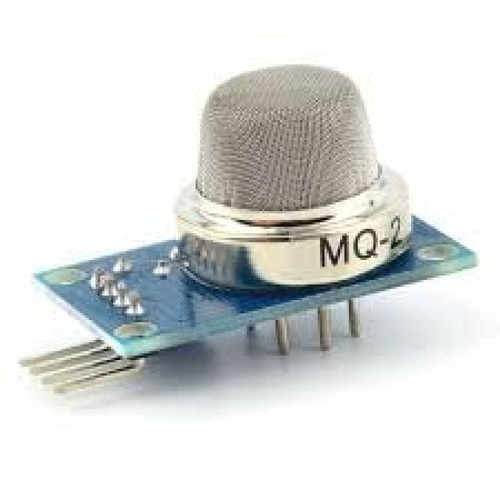
This sensor is present in two forms: as a standalone sensor or as a module. Another point that highlights its easy-to-use design is the presence of the potentiometer. Through this, the user can set the threshold values to stimulate the digital pin when set. The following table will clearly show all this information:
Feature |
Description |
Model Name |
MQ-2 |
Target Gases |
Methane (CH4), Butane (C4H10), Liquefied Petroleum Gas (LPG), Smoke |
Availability |
Standalone sensor or module |
Operating Voltage |
Typically 5V DC ± 0.2V |
Sensing Element |
Typically Tin Dioxide (SnO2), consult datasheet for confirmation |
Heater Element |
Internal heater element (present in most MQ sensors) |
Response Time |
Fast (varies depending on gas type and concentration, typically within seconds) |
Output (Standalone) |
Analog voltage output varies based on gas concentration |
Output (Module, Optional) |
Digital output (often high/low) |
Potentiometer |
Present for adjusting the sensitivity |
Typical Detection Range (ppm) |
200 - 10000 |
MQ3 Gas Sensor
The MQ3 is another gas sensor with a wide variety of gas detection capabilities; therefore, it is one of the favorites of multiple users. It detects a wide variety of gases, including alcohol, benzene, methane, hexane, LPG, carbon monoxide, and some others. Some important advantages of this sensor are its fast response time and high sensitivity. This is used in areas where gases are used as fuel and there are high chances of leakage.
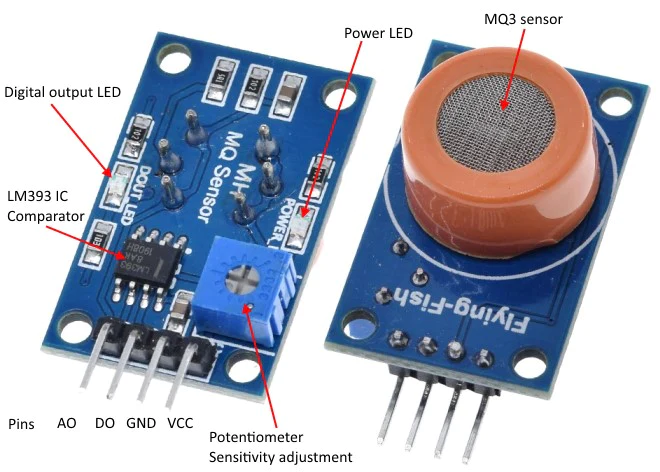
This is also present in the form of a standalone sensor or a module. It has a digital output pin; therefore, can be used even without the need of a microcontroller (in simple circuits). It has the potentiometer to set the threshold values. The quick response time makes it suitable for various industries and domestic areas. Here is the table that shows all these features at a glance:
Feature |
Description |
Model Name |
MQ-3 |
Target Gases |
Primarily Alcohol (Ethanol), and smoke (may also have some sensitivity to other gases) |
Availability |
Standalone sensor or module |
Operating Voltage |
5V DC ± 0.2V (consult the datasheet for the specific model) |
Sensing Element |
Tin Dioxide (SnO2) |
Heater Element |
Internal heater element (present in most MQ sensors) |
Response Time |
Fast (varies depending on gas type and concentration, typically within seconds) |
Output (Standalone) |
Analog voltage output varies based on gas concentration |
Output (Module, Optional) |
Digital output (often high/low) |
Potentiometer |
Present for adjusting the sensitivity |
Typical Detection Range (ppm) |
200 - 2000 |
MQ4 Gas Sensor
This sensor from the MQ sensor series has a fast response time and provides a stable output, which makes it a perfect choice for different projects. It can detect natural gas and methane and is a reliable sensor, among other alternatives. The two LEDs in its structure are a special feature of its module that acts as the output lights. The purpose of these lights is explained here:
- The output at the green light on the module shows that the concentration of the gas is less than the critical level.
- The output of the red light indicates that the concentration of the target gas is less than the critical value.
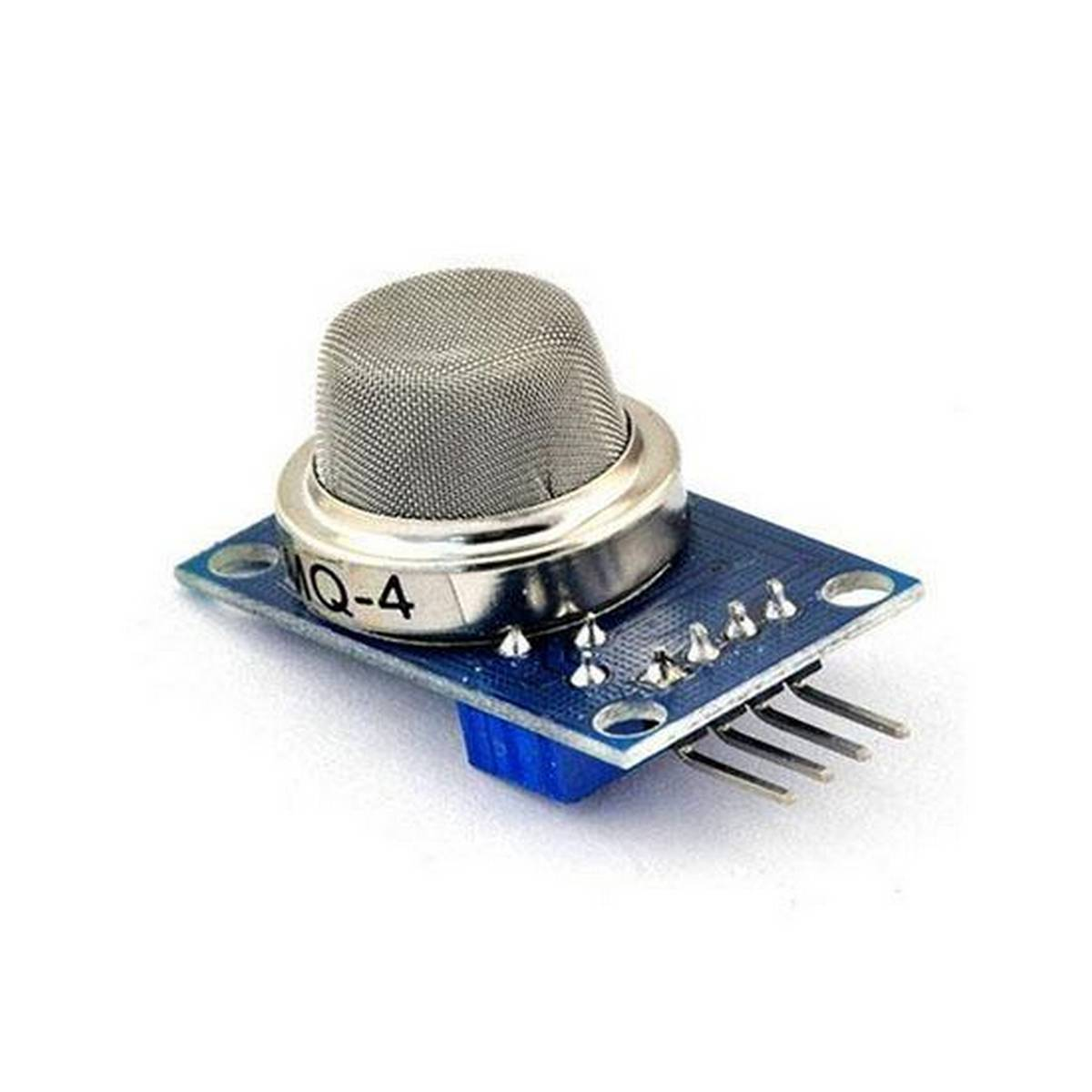
Along with these, other features of this module are mentioned in the table here:
Feature |
Description |
Model Names |
MQ-4 |
Target Gases |
Primarily Alcohol (Ethanol), and smoke (may also have some sensitivity to other gases) |
Availability |
Standalone sensor or module |
Operating Voltage |
5V DC ± 0.2V (consult datasheet) |
Sensing Element |
Tin Dioxide (SnO2), consult the datasheet for confirmation |
Heater Element |
Internal heater element (present in most MQ sensors) |
Response Time |
Fast (varies depending on gas type and concentration, typically within seconds) |
Output (Standalone) |
Analog voltage output varies based on gas concentration |
Output (Module, Optional) |
Digital output (often high/low) |
Potentiometer |
Present for adjusting the sensitivity |
Typical Detection Range (ppm) |
200 - 10000 |
MQ5 Gas Sensor
The MQ5 is the sensor from the MQ as a sensor series, particularly designed to detect H2, LPG, CH4, CO, alcohol, smoke, and related gases. The most significant gas in this regard is LPG because MQ5 has the greatest sensitivity for it. Because it has a great sensitivity to flammable gases, it is therefore a crucial component of the safety system in almost all types of places. The module removes the false alarms because it can filter the noise from alcohol, cooking fumes, or cigarette smoke. The small size and easy integration make it a suitable choice for multiple types of projects.
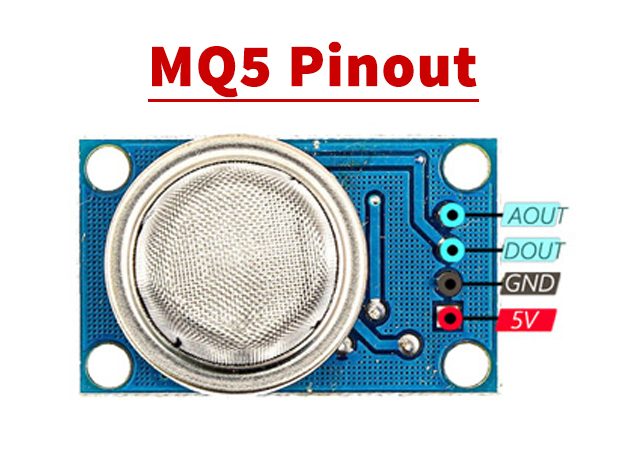
This comes as a sensor as well as a module to fit in different circuits. The module has a buzzer and a potentiometer that allow the user to set the threshold values. In this way, it can be set in such a way as to create an alarming buzzer sound if the target gas concentration exceeds the threshold value. The concentration detection ranges from 200 ppm to 10000 ppm, which is quite wide. It is commonly present in the metal casing and, therefore, has a grey or silver color. All the important features of this sensor are mentioned in the table below:
Feature |
Description |
Model Names |
MQ-5 |
Target Gases |
Methane (CH4), Butane (C4H10), Liquefied Petroleum Gas (LPG), Smoke |
Availability |
Standalone sensor or module |
Operating Voltage |
5V DC ± 0.2V (consult datasheet) |
Sensing Element |
Tin Dioxide (SnO2), consult the datasheet for confirmation |
Heater Element |
Internal heater element (present in most MQ sensors) |
Response Time |
Fast (varies depending on gas type and concentration, typically within seconds) |
Output (Standalone) |
Analog voltage output varies based on gas concentration |
Output (Module, Optional) |
Digital output (often high/low) |
Potentiometer |
Present for adjusting the sensitivity |
Typical Detection Range (ppm) |
200 - 10000 |
MQ6 Gas Sensor
The MQ6 gas sensor is a member of the MQ gas sensor series, which is mainly used for the LPG butane (made of butane and propane) gas sensor but has a sensitivity for other gases as well, such as butane, propane, methane, alcohol, hydrogen, and smoke. The fast response time is a remarkable feature of this sensor that makes it a good choice for detecting LPG, among others on the market. It is a cost-effective sensor with a fast response time, so it is a reliable option. Just like other modules in the MQ series, it can also work with the Arduino, and the user simply has to connect its analogue pin with the Arduino circuit.

This sensor has a potentiometer to adjust the sensitivity and is present in the form of a separate sensor or module. Depending on the module or model, it comes in blue or black color. It detects the gas concentration anywhere between the range of 100 ppm to 10000 ppm. Like other sensors from this aries, the MQ6 sensor also has a power range of 5V. Some modules have the digital pin as most of the MQ sensor members. Here is the table that will show you its features at a glance:
Feature |
Description |
Model Names |
MQ-6 |
Target Gases |
Primarily Liquefied Petroleum Gas (LPG), Propane (C3H8), Butane (C4H10) |
Availability |
Standalone sensor or module |
Operating Voltage |
5V DC ± 0.2V (consult datasheet) |
Sensing Element |
Tin Dioxide (SnO2) |
Heater Element |
Internal heater element (present in most MQ sensors) |
Response Time |
Fast (varies depending on gas type and concentration, typically within seconds) |
Output (Standalone) |
Analog voltage output varies based on gas concentration |
Output (Module, Optional) |
Digital output (often high/low) |
Potentiometer |
Present for adjusting the sensitivity |
Typical Detection Range (ppm) |
100 - 10000 |
MQ7 Gas Sensor
The MQ7 gas sensor is designed to detect carbon monoxide in the air. It has a high sensitivity to the target gas and, therefore, is a reliable device for various circuits. The rapid response time of this sensor (10 seconds) allows it to quickly respond. It works on 5V power, which is very low and makes it a good choice for projects like IoT, where these are powered on continuously. The small size is also a reason for its low power consumption.
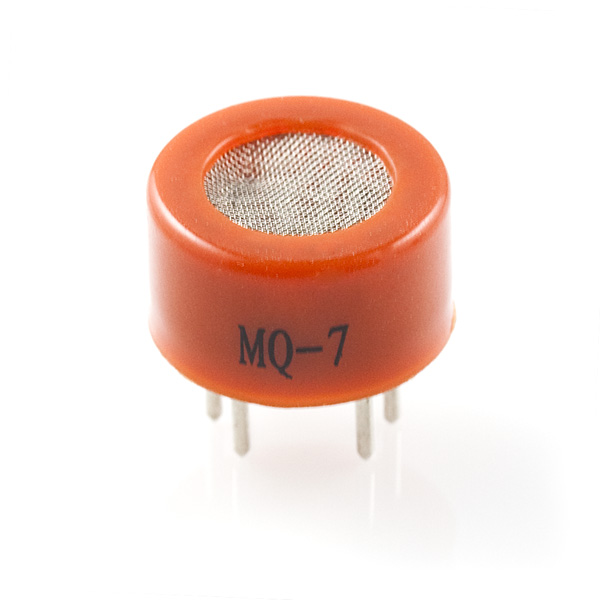
The potentiometer is present in its module, and usually, it is present in blue and grey. Just like other sensors, the metallic covering of the sensor’s circuit protects it from unwanted particles of dirt or other substances. It has a sensitivity ranging from 20 to 2000 ppm and is designed to provide a stable output. Other details of this sensor are mentioned in the table of its features:
Feature |
Description |
Model Names |
MQ-7 |
Target Gases |
Carbon Monoxide (CO), Hydrogen (H2), Ethanol (C2H5OH), Ammonia (NH3) |
Availability |
Standalone sensor or module |
Operating Voltage |
5V DC ± 0.2V |
Sensing Element |
Tin Dioxide (SnO2) |
Heater Element |
Internal heater element |
Response Time |
Fast (varies depending on gas concentration, typically within seconds) |
Output (Standalone) |
Analog voltage output varies based on CO concentration |
Output (Module, Optional) |
Digital output (often high/low) |
Potentiometer |
Present for adjusting the sensitivity |
Typical Detection Range (ppm) |
20 - 2000 |
MQ8 Gas Sensor
Hydrogen is a colorless odorless gas that is flammable even at low concentrations; therefore, early detection of this gas is important. The MQ8 gas sensor is an ideal choice for it because its mechanism is designed to detect hydrogen ranging from 100 to 1000 ppm. It has a sensitivity to other gases as well, such as smoke and LPG, but in these cases, it does not provide the best performance. It has a fast response time and is small, so it may be placed in different circuits.
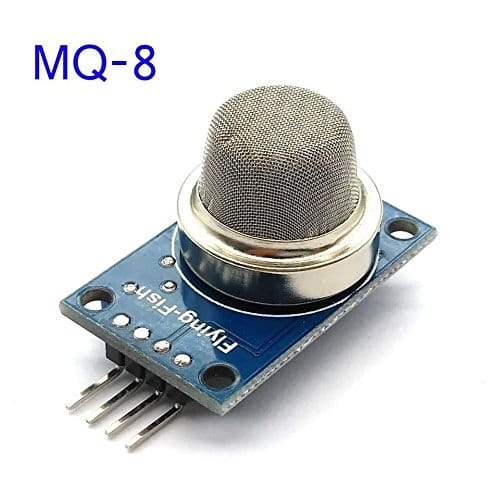
The operating temperature of this sensor is 5 volts, and it is available at a cheaper rate on the market so can be used in almost all types of projects. It shows the analog and digital output; therefore, it can be used without any need for a microcontroller. The digital output ranges from 0V to 5V and follows the TTL logic. At Atians the stable performance is 20 seconds after it is powered on so is a reliable source for the detection of hydrogen gas. The following table highlights its basic features:
Feature |
Description |
Model Names |
MQ-8 |
Target Gas |
Hydrogen (H2) |
Availability |
Standalone sensor or module |
Operating Voltage |
5V DC ± 0.1V |
Sensing Element |
Tin Dioxide (SnO2) |
Heater Element |
Internal heater element |
Response Time |
Fast (varies depending on gas concentration, typically within seconds) |
Output (Standalone) |
Analog voltage output varies based on H2 concentration |
Output (Module, Optional) |
Digital output (often high/low) |
Potentiometer |
Present for adjusting the sensitivity |
Typical Detection Range (ppm) |
100 - 10000 |
MQ9 Gas Sensor
The MQ9 gas sensor is a reliable source to detect carbon monoxide and some flammable gases. We know that CO is a poisonous gas that hinders the oxygen supply in the body; therefore, its early detection is crucial in areas where the chances of gas leakage are high. Multiple sensors are on the market for CO detection, but MQ9 is preferred because of its low cost and instant performance.
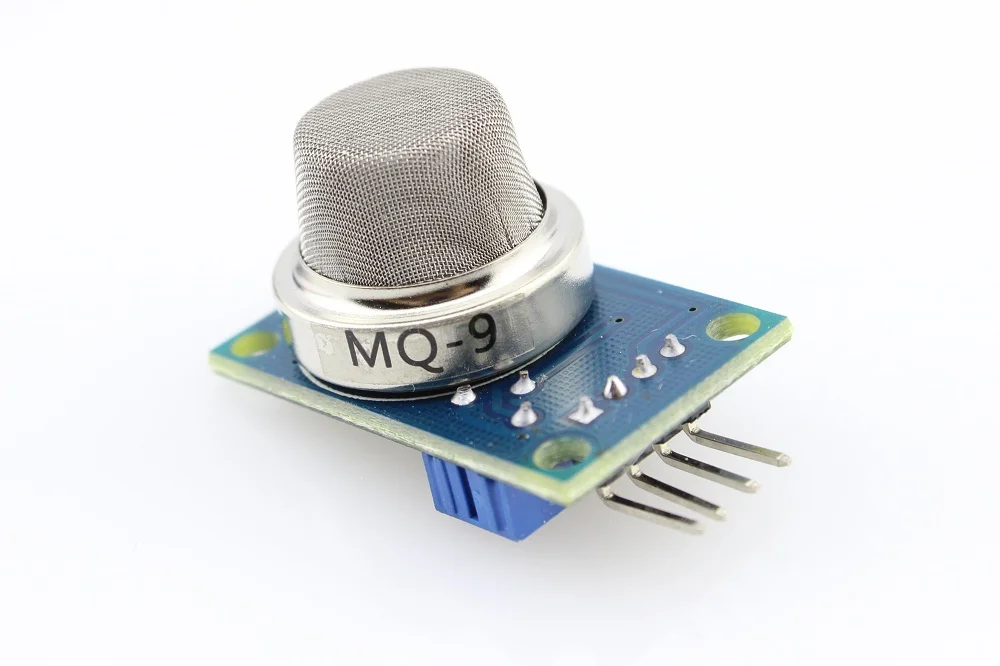
The digital and analog outputs help users consume them for multiple types of projects. The gas detection depends on the change in temperature values. At low temperatures, MQ9 can detect the presence of carbon monoxide whereas when the temperature is high, it successfully detects methane, propane, and other combustible gases. This feature supports its applications in the domestic areas for fuel gas leakage detection.
Feature |
Description |
Model Names |
MQ-9, MQ-9L, MQ-9S |
Target Gas |
Carbon Monoxide (CO), Methane (CH4), LPG |
Availability |
Standalone sensor or module |
Operating Voltage |
5V DC ± 0.2V |
Sensing Element |
Electrochemical (typical) |
Heater Element |
Internal heater element |
Response Time |
30~90 seconds |
Output (Standalone) |
Analog voltage output varies based on gas concentration |
Output (Module, Optional) |
Digital output (often high/low) |
Potentiometer |
Present for adjusting the sensitivity |
Typical Detection Range (ppm) |
10 - 10000 |
MQ131 Gas Sensor
The MQ131 gas sensor is specialized to detect the ozone gas around it. It works like the MQ7 and MQ9 gas sensors which means that at low temperatures, it detects the presence of ozone gas, and at high temperatures, the depletion layer around its sensing element is absorbed in the air so it eliminates all other absorbed gases.
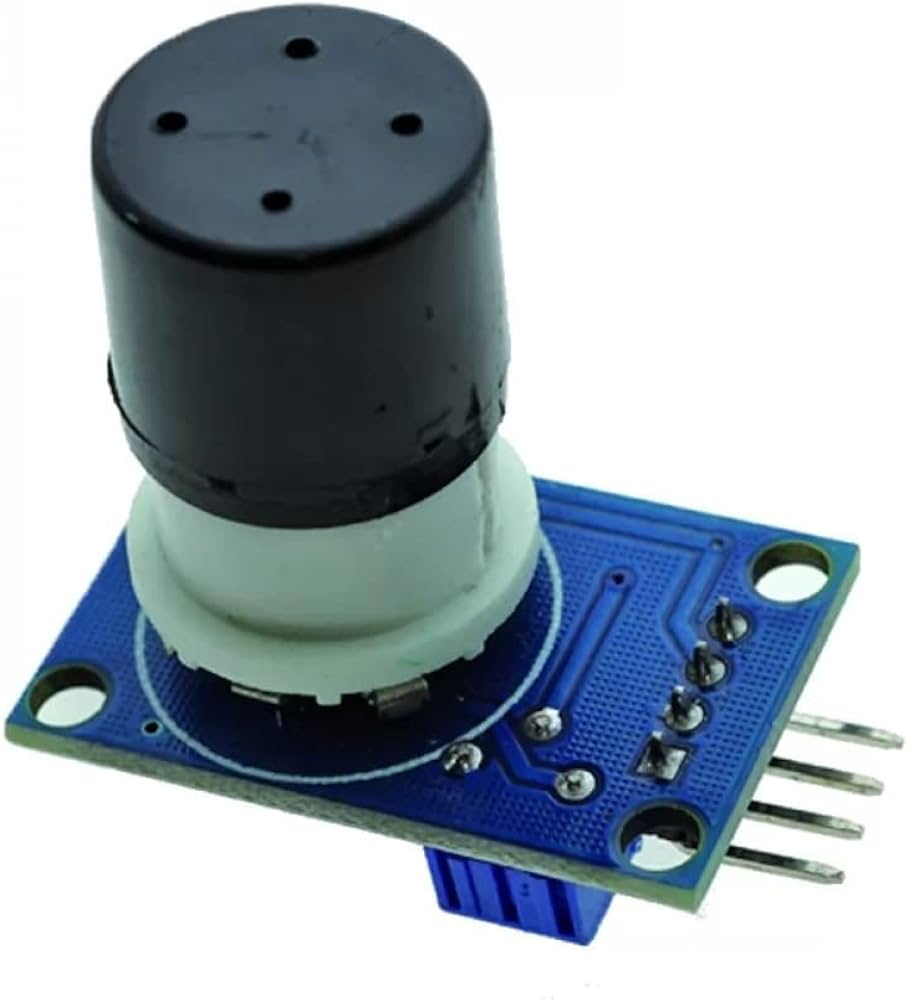
The increase in the ozone concentration results in the increase of its conductance and can detect ozone (highly sensitive), CL2, NO2, and some other gases. Here is its table that explains its features:
Feature |
Description |
Model Names |
MQ-131, MQ-131H (High Concentration) |
Target Gas |
Ozone (O3) |
Availability |
Standalone sensor or module |
Operating Voltage |
≤ 24V DC (Loop Voltage) |
Heater Voltage |
5.0V ± 0.1V AC or DC |
Sensing Element |
Semiconductor metal oxide (typical) |
Heater Element |
Internal heater element |
Response Time |
Varies depending on gas concentration |
Output (Standalone) |
Analog voltage output varies based on O3 concentration |
Output (Module, Optional) |
Digital output (often high/low) |
Potentiometer |
Present for adjusting the sensitivity |
Typical Detection Range (ppm) |
10 - 1000 |
MQ135 Gas Sensor
The MQ135 is also called the all-rounder of the gas detector because of the wide variety of gases it can easily detect, therefore, it is a solution for multiple industries' gas detection. The basic gases it can detect are NH3, NOx, alcohol, benzene, smoke, and CO2, but it is also sensitive to ammonia, sulfide, smoke, and other harmful gases.
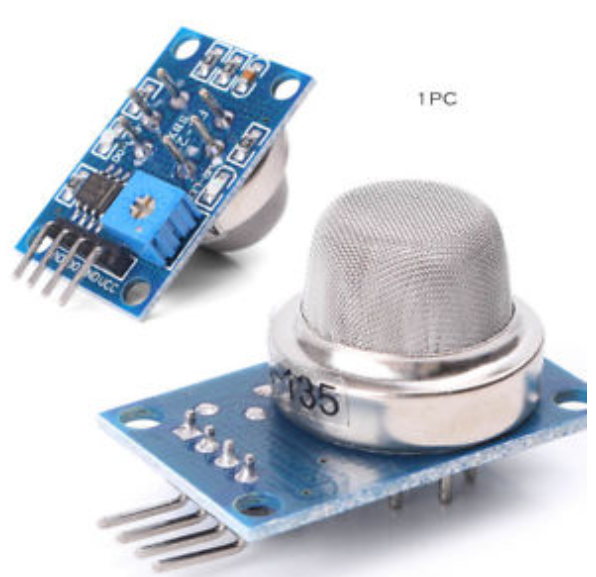
In some cases, it is considered an air quality sensor because it can detect multiple impurities in the air. Its basic features are mentioned in this table:
Features |
Description |
Model Names |
MQ-135, MQ-135L |
Target Gas |
Ammonia (NH3), Alcohol (Ethanol), Benzene (C6H6), Smoke, and other harmful gases |
Availability |
Standalone sensor or module |
Operating Voltage |
5V DC ± 0.1V |
Sensing Element |
Semiconductor metal oxide (typical) |
Heater Element |
Internal heater element |
Response Time |
Fast (varies depending on gas concentration, typically within seconds) |
Output (Standalone) |
Analog voltage output varies based on gas concentration |
Output (Module, Optional) |
Digital output (often high/low) |
Potentiometer |
Present for adjusting the sensitivity |
Typical Detection Range (ppm) |
10 - 100 |
MQ137 Gas Sensor
This sensor is designed to detect ammonia (NH3) and carbon monoxide (CO) and belongs to the air quality monitoring category. It has a digital pin, can be connected to the microcontroller, and also has a sensitivity to ozone gas.
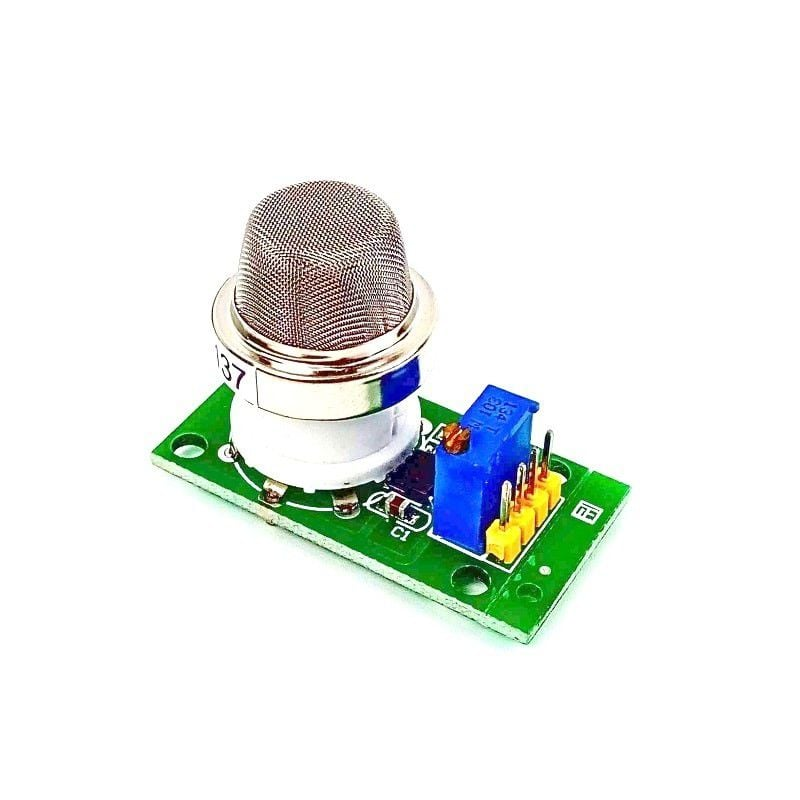
It shows a quick response time and is easy to install in the projects therefore, is a good option to be used in the study project as well. Other features can be found in the table below:
Feature |
Description |
Model Names |
MQ-137 |
Target Gas |
Ammonia (NH3) |
Availability |
Standalone sensor or module |
Operating Voltage |
5V DC ± 0.1V (AC or DC) |
Heater Voltage |
5V DC ± 0.1V (AC or DC) |
Sensing Element |
Semiconductor metal oxide (SnO2) |
Heater Element |
Internal heater element |
Response Time |
Fast (varies depending on gas concentration, typically within seconds) |
Output (Standalone) |
Analog voltage output varies based on NH3 concentration |
Output (Module, Optional) |
Digital output (often high/low) |
Potentiometer |
Present for adjusting the sensitivity |
Typical Detection Range (ppm) |
1 - 1000 |
Conclusion
The MQ gas sensor series stands as the optimal solution for detecting gas leaks, whether they involve combustible gases or general ones. It is a reliable and versatile solution for the detection of various gases that are alarming for the safety measures of any place. Most of the sensors have a wide detection scope, and after carefully observing all the sensors, I can say most of the sensors have a gas detection range from 10 ppm - 10000 ppm. The sensors are engineered to detect specific gases, yet they possess the capability to detect additional gases, although with reduced sensitivity, owing to their similar internal structure.
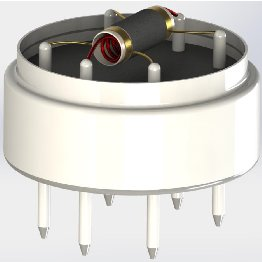
The basic structure of these sensors depends on the ceramic tube on which the sensing layer is spread and a heating structure that stimulates the sensing element to absorb oxygen from the air. This produces the depletion layer of oxygen ions and increases its resistance. Once the target gas comes into contact with this region, it initiates a reaction that leads to a reduction in the thickness of the depletion region. Consequently, the conductivity of the sensing element increases, which is reflected in the output signal on the analog pin. If the threshold value is set through the potentiometer, it stimulates the digital pin.
We have seen different members of the MQ series and understood their basic features and working principles. I hope you found this article useful and if you want to learn more, you can ask in the comment section.



